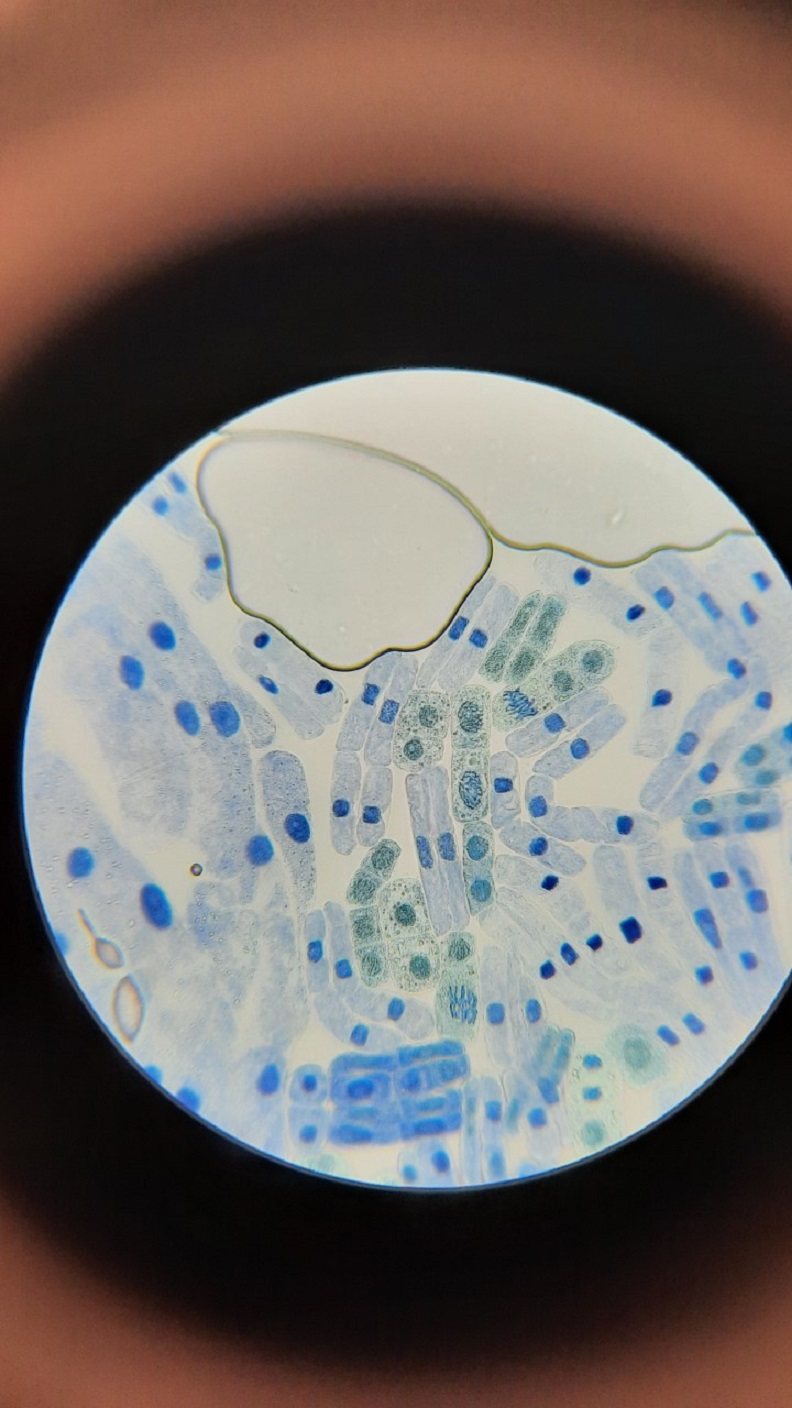A-level set practicals – microscopy of root tip mitosis
Resource

This resource supports the use of practicals across various A-level biology 2015 specifications for England (OCR, AQA, Edexcel and Eduqas).
In this practical, students will prepare and observe dividing cells from the meristems of actively growing garlic root tips.
This is an improved and simplified protocol from the well-known version using acetic orcein. Toluidine blue is used to stain the DNA in the meristem cells, giving a simpler and less hazardous process for the students, and producing an excellent level of contrast within the cells.
It is also possible to carry out this method using spider plant root tips.
In plants, cell division by mitosis is restricted to specific tissues, called meristems, that are found at the growing root and shoot tips and in the cambium between the xylem and phloem of the vascular bundle. The cells in the meristems are undifferentiated. By following this protocol, students will be able to observe the dividing cells clearly, and calculate the mitotic index.
We recommend using garlic for the standard practical. Students may also wish to carry out further investigations using plants such as hyacinth, onion and broad bean: details for producing root tip squashes for these are also given. You can view our separate resource on growing garlic roots here.
Materials include:
- Tested materials to support the A-level practical endorsement (CPAC)
- Support materials for teachers and technicians
- Student worksheet to help provide evidence for meeting the practical skills requirements
- Student revision materials to help prepare for exams
We explored the use of spider plants to identify stages of mitosis within root tips in addition to using garlic. We found that whilst root growth is quicker in garlic and garlic tended to produce more roots per plantlet, some stages of mitosis were visible in the root tips of spider plants. We particularly found cells undergoing metaphase.
Support materials for other key practicals in A-level specifications can be found on the A-level set practicals main page.
Your FAQs Answered
Q: How long does it take for the roots to grow?
A: That is a difficult question to answer as it is variable due depending on the garlic itself and the temperature.
It is a good idea the set some growing on consecutive days before it is needed. Therefore you should have some the right length which is ideally about 1cm.
What's included?
- SAPS - Root Tip Mitosis for A-level set practials - Powerpoint
- SAPS - Root Tip Mitosis for A-level set practicals - Student Sheet
- SAPS - Root Tip Mitosis for A-level set practicals - Student Support and Preparation Sheet
- SAPS - Root Tip Mitosis for A-level set practicals - Technical & Teaching Notes